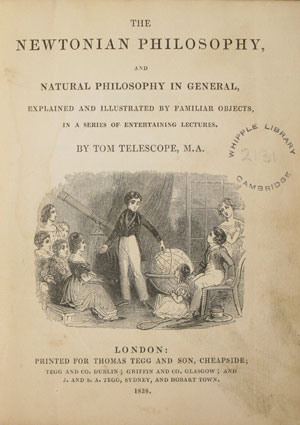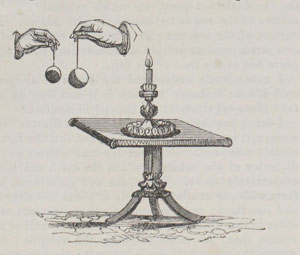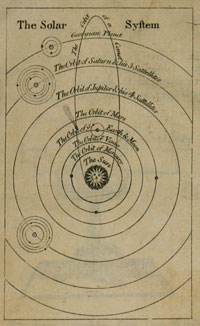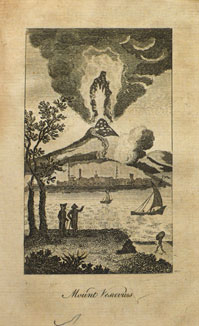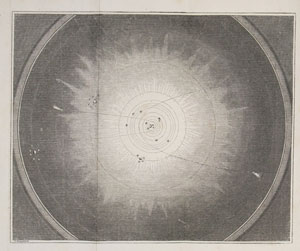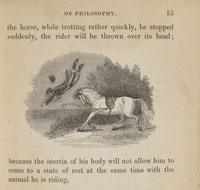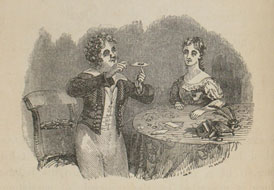Newton for children: Tom Telescope
In 1761 the first of a series of books was published written by John Newbery (1713–1767) attributed to the pseudonymous Tom Telescope, the most famous being The Newtonian System of Philosophy Adapted to the Capacities of Young Gentlemen and Ladies. These books featured a young boy (Tom) lecturing his friends on the Newtonian System of Natural Philosophy. Tom Telescope books were so popular that they ran into many editions over the subsequent eighty years. All aspects of natural knowledge were incorporated under this 'Newtonian' designation because, in popular science, Newtonianism became synonymous with natural science, and the reputation of Newton sold books.
Tom Telescope books sought to make science into an entertaining game, using nursery objects as philosophical apparatus. They projected an idealised vision of children and adults brought together in a common pursuit of science. Newton, through Tom, was upheld as a model for children to follow. The books were also used to teach moral lessons such as the dangers of gambling and the value of good manners and gentlemanly behaviour, at the same time as instructing about natural philosophy. Tom Telescope, a child prodigy, was portrayed as a model of virtue, obtaining an understanding of God and His handiwork as he mastered the Newtonian system.
From The Newtonian system of philosophy : explained by familiar objects, in an entertaining manner for the use of young ladies and gentlemen / by Tom Telescope (London, 1798). STORE 39:18
Engraved frontispiece of the Solar System in The Newtonian system of natural philosophy: explained by familiar objects, in an entertaining manner, for the use of young persons... A new and improved edition... (Chiswick, 1827). STORE 39:26
Although the characters portrayed in earlier editions comprised nobility (such as countesses and dukes) the intended audience included those in the professional and mercantile classes seeking to learn about and emulate the socially elite. As the editions went into the early nineteenth century, they had to change to meet the demands of a changing audience. The audience no longer wanted to be lectured to by a child; therefore Tom grew up into a young man. By the 1838 edition, the characters became middle class people, meeting in the home of a Mrs Mentor. The contents were also revised, to include new subjects such as magnetism and electricity, and new disciplines such as geology. Also, some of the heated discussion and arguing that was prevalent in the earlier editions was also removed to accommodate a neutralised storyline, more in keeping with conventions of the age.
Plates from The Newtonian philosophy, and natural philosophy in general : explained and illustrated by familiar objects in a series of entertaining lectures (London, 1838) STORE 71:10

